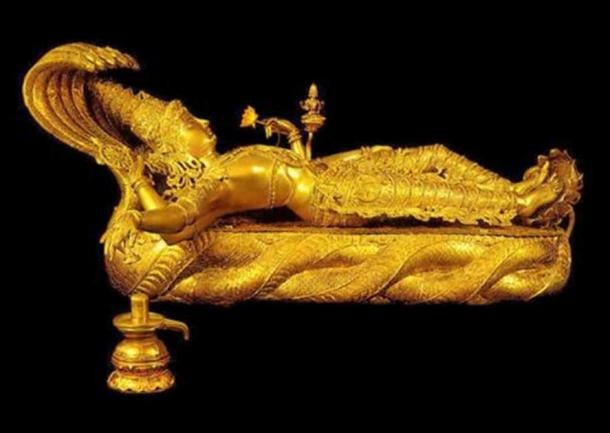 |
| Ahura Mazda (The god of Zoroastrians). |
The Zoroastrian religion has so many comparables to the Hindu/Sanatana Dharma. So much so that one feels, Zoroastrianism is the part of the greater family of Hinduism including Jainism and Buddhism.
The God of the Zorastrian is called "Ahura" (Closer to Asura of the Hindu Scriptures) and the enemies are called "Daeva". Probably the older days (Pre-Islamic) wars/conflict between north-west part of Bharat and Persia (now Iran) was termed as Deva-Asura battle.
Nevertheless, Ahura sits on a thing that looks like eagle which is similar to Mahavishnu being seated on the Garuda.
 |
| Mahavishnu on the Garuda. |
The holy scripture of Zorastrians is known as Avesta. The other name of Avesta is Aveda (Sounds very close to the word "Veda").
Other than Ahur, the Zoroastrians revere demigods or angels called as "Yazatas" (Sanskrit equivalent being Yakshas).
The main worship ritual of the Zoroastrians is called the Yasna or the Sanskrit form "Yajna". The Yasna has three main fires that are protected and worshiped, namely:-
1. Atash Adaran
2. Atash Behram
3. Atash Dadgah
In Yajna too there are 3 fires.
1. Avahaniya
2. Garhapatya
3. Dakshina
 |
| Yasna ritual by three priests representing the three fires. |
The entire process of Yasna is similar to our rituals starting from shuddhi, inviting/invoking deity to completing the worship.
Similar to the pancha bhootas mentioned in Hinduism, Avesta mentions of 5 elements:-
1. asman (sky)
2. Zamig (earth - also Zamin in Urdu/Hindi)
3. xwarag (Fire)
4. ab/apas (Water)
5. wad (air)
Also cattle (called as gospand equivalent to the Sanskrit "gov/go - गौ/गो) are revered in Persian texts.
 |
| The Persian Empire at its peak. |
The gahambars or the festivals they celebrate too are similar to the festivals in Hinduism.
No wonder Will Durant said, “India was the motherland of our race, and Sanskrit the mother of Europe's languages: she was the mother of our philosophy; mother, through the Arabs, of much of our mathematics; mother, through the Buddha, of the ideals embodied in Christianity; mother, through the village community, of self-government and democracy. Mother India is in many ways the mother of us all".


